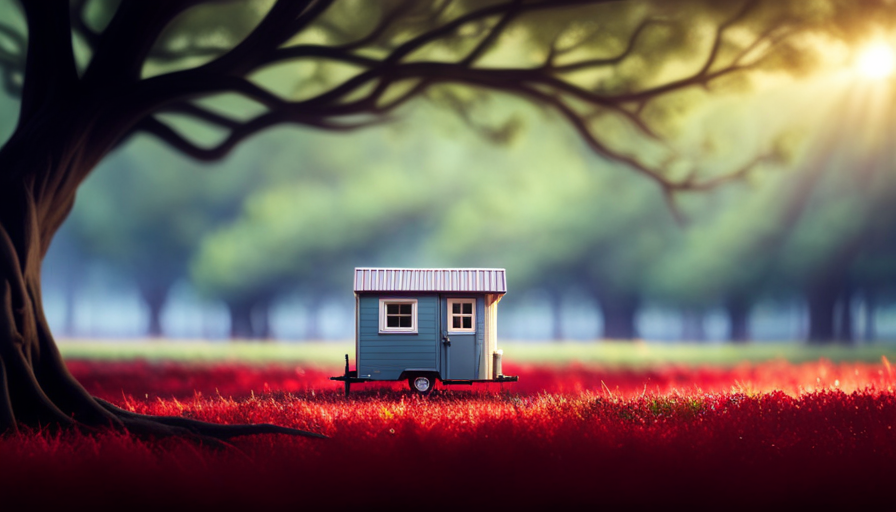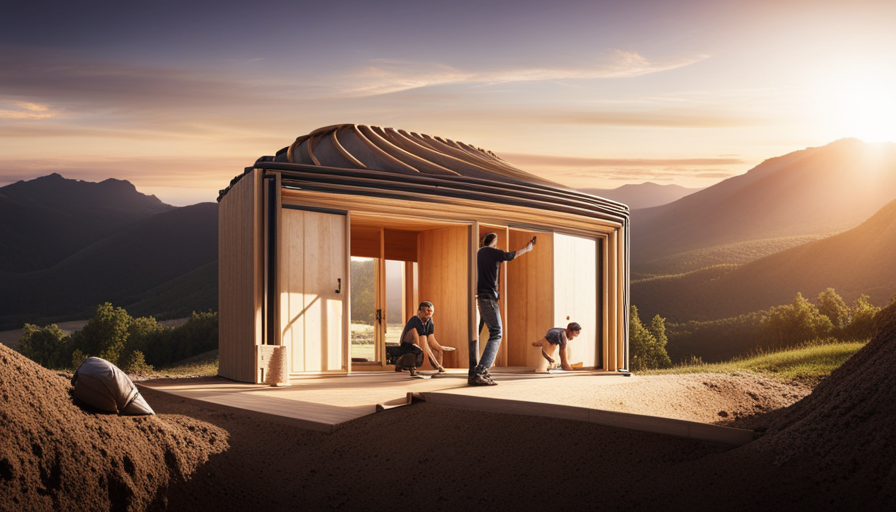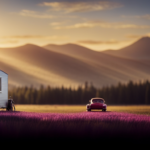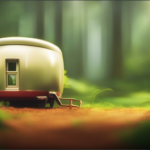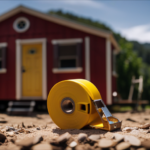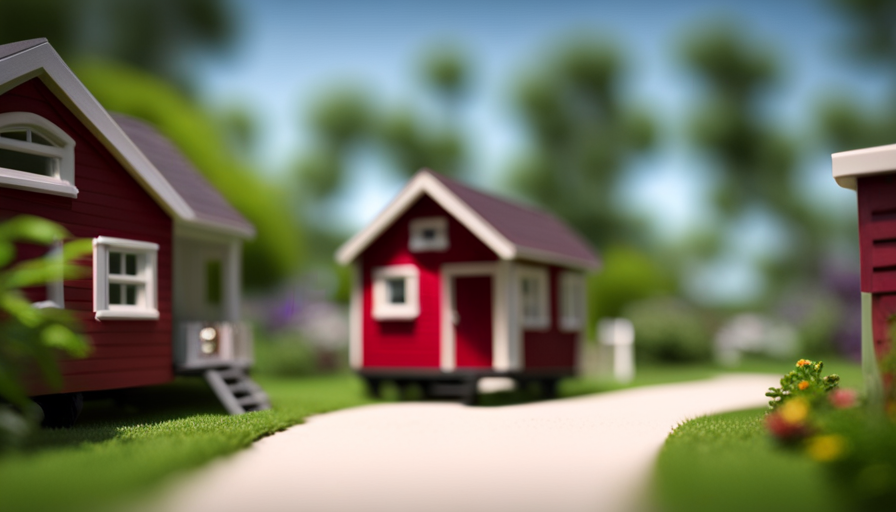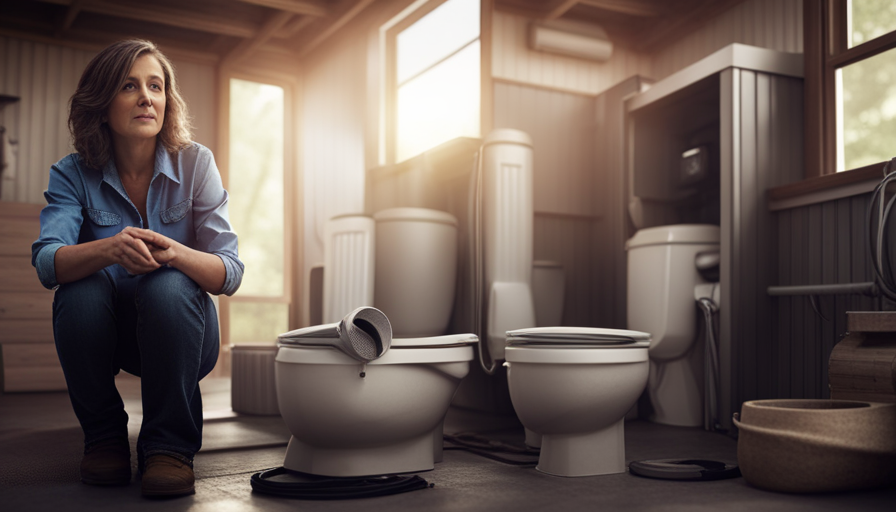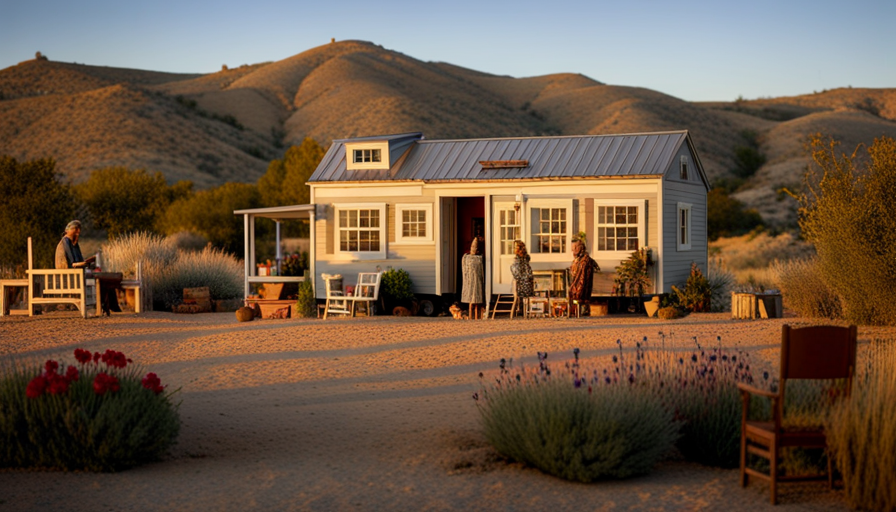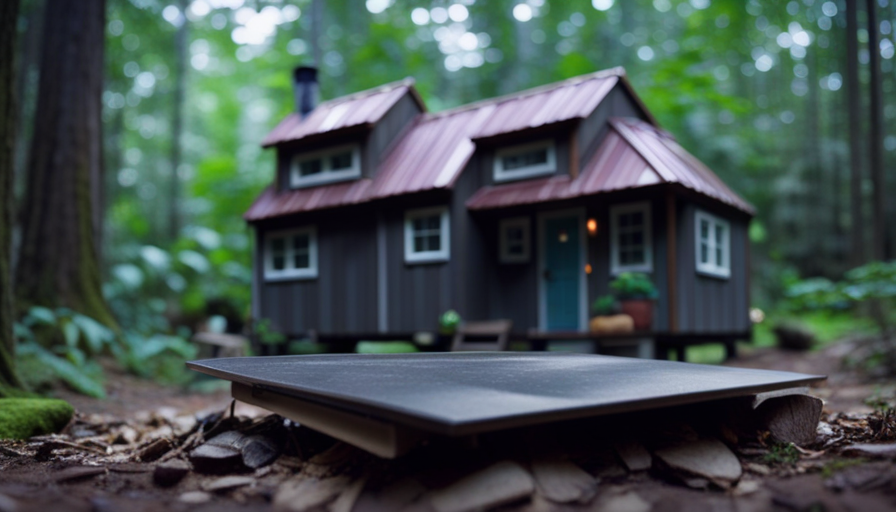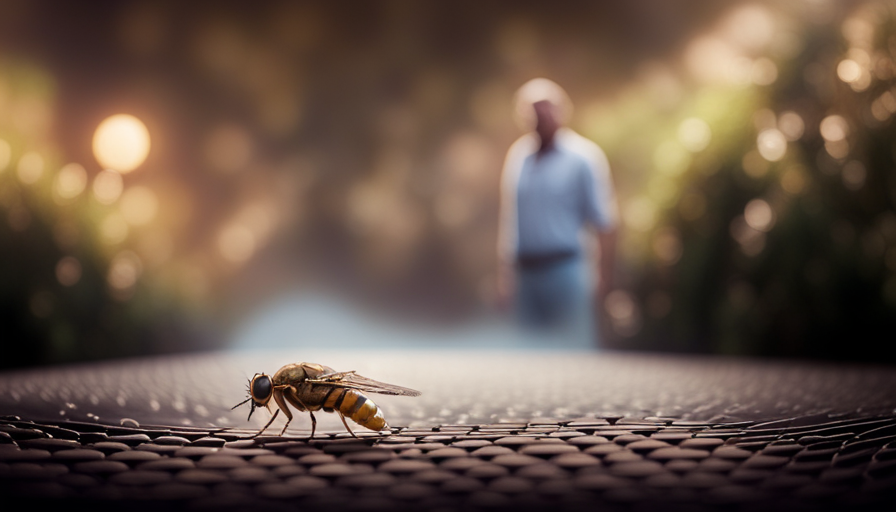Always wondered how low a tiny house trailer can go? Get ready to be amazed as this article delves into the world of low-profile trailers made for tiny homes.
These innovative trailers offer a multitude of benefits, from space-saving design features to easy mobility and transportation. But what are the legal requirements and regulations surrounding these unique structures? And what challenges can arise when building and living in a low tiny house trailer?
Fear not, as I will provide all the answers you need. Whether you’re considering a low-profile trailer for your own tiny house or simply curious about this fascinating trend, join me as we explore the possibilities and discover inspiring examples of low tiny house trailer designs.
Get ready to be inspired and amazed by the incredible world of low tiny house trailers.
Key Takeaways
- Low-profile trailers for tiny houses offer benefits such as space-saving design features and easy mobility.
- Regulations and legal requirements vary by jurisdiction, including height restrictions, weight limits, building codes, and zoning regulations.
- Challenges of building and living in a low tiny house trailer include careful planning, precise measurements, and lightweight yet durable materials.
- Tips for maximizing space in a low tiny house trailer include utilizing vertical space, optimizing storage under furniture, using multipurpose furniture, and embracing organization systems.
The Benefits of Low-Profile Trailers
Imagine cruising down the road with a low-profile tiny house trailer, effortlessly gliding under bridges and through narrow spaces, making the journey to your next destination a breeze. Low-profile trailers offer numerous benefits for tiny house enthusiasts, including space-saving solutions and cost-effective alternatives.
One of the major advantages of low-profile trailers is their ability to navigate through tight spaces. With a reduced height, these trailers can easily maneuver under low bridges and overhead obstacles that taller trailers would struggle with. This opens up a world of possibilities for tiny house owners, allowing them to explore areas that were previously inaccessible.
In addition to their maneuverability, low-profile trailers also offer space-saving design features. These trailers are designed to maximize every inch of available space, allowing for efficient storage and utilization of the interior. From built-in cabinets and shelves to fold-out furniture, every nook and cranny is utilized to its fullest potential.
Furthermore, low-profile trailers are cost-effective alternatives to traditional tiny house trailers. With their smaller size and reduced materials, these trailers are often more affordable to purchase and maintain. This makes them an attractive option for those on a tight budget or looking for a more economical solution.
Low-profile tiny house trailers offer a range of benefits, including space-saving solutions and cost-effective alternatives. With their ability to navigate through tight spaces and their efficient use of interior space, these trailers provide a practical and efficient housing option for those seeking a minimalist lifestyle.
Space-Saving Design Features
With clever design features, these compact mobile homes can maximize every inch of available space. Space-saving techniques and innovative compact designs allow tiny house trailers to offer functionality and comfort despite their small size. Here are some key design features that contribute to their space-saving capabilities:
-
Lofted sleeping areas: By utilizing vertical space, tiny house trailers often feature lofted sleeping areas, freeing up valuable floor space for other purposes.
-
Foldable furniture: To optimize space, many tiny house trailers incorporate foldable furniture such as tables, chairs, and beds. These can easily be folded away when not in use, creating a more open living area.
-
Multi-functional furniture: Dual-purpose furniture, such as a sofa that can transform into a bed or storage compartments built into staircases, maximize functionality while minimizing the footprint.
-
Clever storage solutions: Tiny house trailers often utilize creative storage solutions, such as built-in cabinets, under-bed storage, and hidden compartments, to make the most of limited space.
-
Compact appliances: Compact appliances, like combination washer-dryers and slim refrigerators, are specifically designed to fit seamlessly into the small footprint of tiny house trailers.
These space-saving design features enable tiny house trailers to offer a surprising amount of livable space despite their compact size. Transitioning into the subsequent section, the mobility and easy transportation of these homes is another key aspect to consider.
Mobility and Easy Transportation
When you’re on the move, it’s remarkable how easily these compact homes can be transported. Tiny house trailers are specifically designed for mobility and easy transportation. Their compact size and lightweight construction make them perfect for towing behind a vehicle.
These trailers are typically built to be no taller than 13.5 feet, which allows them to fit under most bridges and overpasses. Additionally, they are designed to be narrow enough to fit within standard lane widths on the road.
To ensure their mobility, tiny house trailers are constructed using lightweight materials such as steel or aluminum. These materials not only reduce the overall weight of the trailer but also provide strength and durability. The lightweight construction allows for easier towing and maneuverability, making it feasible to take your tiny house on trips or move it to a new location whenever desired.
In terms of transportation, it’s important to note that regulations and legal requirements vary by jurisdiction. It’s crucial to familiarize yourself with the specific rules and regulations in your area before transporting your tiny house. By understanding and adhering to these regulations, you can ensure a safe and hassle-free journey with your compact home.
Moving on to the next section about regulations and legal requirements, it’s important to know what you need to do to comply with the law.
Regulations and Legal Requirements
To comply with regulations and legal requirements, you must familiarize yourself with the specific rules in your jurisdiction, ensuring a safe and hassle-free journey with your compact home. Here are four key considerations when it comes to regulations compliance and building permits for low tiny house trailers:
-
Height Restrictions: Many jurisdictions have height restrictions for trailers on public roads. It’s crucial to adhere to these limitations to avoid any legal issues. Make sure your low tiny house trailer meets the height requirements set by local authorities.
-
Weight Limits: Different jurisdictions have specific weight restrictions for trailers. Ensure that your low tiny house trailer falls within the permissible weight limits to ensure road safety and avoid any penalties.
-
Building Codes: When constructing your low tiny house trailer, it’s important to adhere to building codes and regulations. These codes ensure the structural integrity and safety of your compact home. Consult with local building authorities to obtain the necessary permits and ensure compliance.
-
Zoning Regulations: Before parking or living in your low tiny house trailer, it’s essential to understand and comply with zoning regulations. Some areas have restrictions on where you can park or live in a tiny house trailer. Research the local zoning laws to avoid potential challenges.
Understanding and complying with regulations and legal requirements will help you overcome the challenges of building and living in a low tiny house trailer, ensuring a smooth transition into the subsequent section about the challenges of building and living in a low tiny house trailer.
Challenges of Building and Living in a Low Tiny House Trailer
Navigating the obstacles of constructing and residing in a compact mobile sanctuary can be an exhilarating yet demanding adventure. When it comes to building a low tiny house trailer, there are a few challenges that need to be considered.
Firstly, one of the challenges is the construction process itself. Building a low-profile trailer requires careful planning and precise measurements to ensure that the structure remains stable and secure. Additionally, the materials used must be lightweight yet durable to withstand the stresses of the road.
Cost considerations are also a significant challenge when constructing a low tiny house trailer. The specialized design and materials needed for a low-profile trailer can increase the overall cost of the project. From choosing the right trailer base to purchasing low-profile materials, the expenses can quickly add up.
Despite these challenges, the rewards of living in a low tiny house trailer can outweigh the difficulties. The ability to travel with ease and live a minimalist lifestyle can be incredibly freeing. Transitioning into the subsequent section about design considerations for low-profile trailers, it is essential to carefully consider the layout and overall design to maximize space and functionality.
Design Considerations for Low-Profile Trailers
Consider carefully planning the layout and design of your compact mobile sanctuary to optimize space and functionality. When it comes to designing a low-profile tiny house trailer, there are several important considerations to keep in mind.
One of the primary concerns is ensuring stability. A low-profile trailer may have a lower center of gravity, which can increase stability while towing and when parked.
Additionally, it is crucial to carefully consider the height of the ceilings in your tiny house. Low ceilings can create a cozy and intimate atmosphere, but they can also make the space feel cramped and claustrophobic. To prevent this, consider using light colors and reflective materials on the walls and ceilings to create an illusion of more space. Additionally, using clever storage solutions that maximize vertical space can help compensate for the lower ceiling height.
When designing your low-profile tiny house trailer, take into account these considerations for stability and low ceilings to create a comfortable and functional living space. Transitioning into the next section about choosing the right trailer height for your needs, it’s important to consider not only the height limitations but also the overall requirements of your tiny house.
Choosing the Right Trailer Height for Your Needs
When choosing the perfect trailer for your compact mobile sanctuary, it’s important to keep in mind your specific needs, such as the ideal height that can accommodate your lifestyle and preferences. Did you know that trailers with taller heights provide more headroom and can offer up to 10% more usable space? To determine the right trailer height for your needs, it’s crucial to consider factors like weight distribution and choosing the appropriate trailer width.
When it comes to weight distribution, it’s essential to ensure that the weight of your tiny house is evenly distributed along the trailer. This will help maintain stability and prevent any potential issues during transportation. Additionally, the width of the trailer should be chosen carefully to ensure that it aligns with the width of your tiny house, allowing for a secure fit.
To help you better understand the considerations for choosing the right trailer height, take a look at the table below:
| Trailer Height | Headroom | Usable Space |
|---|---|---|
| Low | Limited | Less |
| Medium | Moderate | Average |
| High | Ample | More |
| Extra High | Spacious | Maximum |
By carefully considering your specific needs and preferences, you can choose a trailer height that provides the perfect balance of headroom and usable space for your tiny house. In the next section, we will explore tips for maximizing space in a low tiny house trailer, ensuring that every inch is utilized efficiently.
Tips for Maximizing Space in a Low Tiny House Trailer
Looking to make the most of your compact mobile sanctuary? Discover simple yet effective tips for maximizing space in a low tiny house trailer.
-
Utilize vertical space: When dealing with limited floor space, it’s essential to think vertically. Install shelves, hooks, and racks on the walls to store items such as kitchen utensils, clothing, and accessories.
-
Optimize storage under furniture: Don’t let the space under your furniture go to waste. Invest in storage containers or bins that fit neatly underneath your bed, couch, or dining table. This way, you can make use of every inch available.
-
Use multipurpose furniture: Select furniture pieces that serve multiple functions. For example, choose a sofa that can convert into a bed or a coffee table with hidden storage compartments. This allows you to maximize functionality while minimizing the amount of furniture you need.
-
Embrace organization systems: Implementing smart storage solutions can greatly enhance the organization of your tiny house. Utilize drawer dividers, hanging organizers, and storage baskets to keep everything in its place and easily accessible.
By implementing these tips for maximizing storage and small space organization, you can create a more efficient and comfortable living environment in your low tiny house trailer. Transitioning into the subsequent section about creative storage solutions for low-profile trailers, you’ll discover even more innovative ways to optimize your space.
Creative Storage Solutions for Low-Profile Trailers
Get ready to discover some ingenious storage ideas that will transform your compact mobile haven into a clutter-free oasis. When it comes to creative storage solutions for low-profile trailers, space-saving design is key. Maximizing every inch of available space is crucial in order to make the most out of your tiny home on wheels.
One effective way to optimize storage in a low-profile tiny house trailer is by utilizing vertical space. Installing tall cabinets or shelves that reach the ceiling allows you to store items that are not frequently used, such as seasonal clothing or kitchen appliances. Additionally, incorporating built-in furniture with hidden compartments, like a bed with drawers underneath or a dining table with storage compartments, can help maximize space while keeping your belongings organized.
To give you a visual representation of these storage solutions, take a look at the table below:
| Storage Solution | Description |
|---|---|
| Vertical Cabinets | Tall cabinets that reach the ceiling, providing ample storage space. |
| Built-in Furniture | Furniture pieces with hidden compartments for extra storage. |
These creative storage solutions not only help declutter your tiny house trailer, but also create a visually appealing and organized living space. By utilizing these space-saving techniques, you can make the most out of your limited square footage. Now, let’s move on to inspiring examples of low tiny house trailer designs.
Inspiring Examples of Low Tiny House Trailer Designs
Prepare to be inspired by these awe-inspiring examples of compact mobile homes on wheels, showcasing innovative designs that’ll leave you amazed.
These low tiny house trailer designs are not only visually appealing but also offer practical solutions for those seeking a minimalist lifestyle.
-
Ingenious Use of Space: These low-profile trailers feature clever space-saving techniques that maximize every inch of the interior. From foldable furniture to hidden storage compartments, these designs prioritize functionality without compromising on comfort.
-
Low Cost Construction: One of the key advantages of these tiny house trailers is their affordability. By utilizing cost-effective materials and simplified construction techniques, these homes offer a budget-friendly alternative to traditional housing options.
-
Environmental Sustainability: Many of these low tiny house trailer designs prioritize environmental sustainability. They incorporate eco-friendly features such as solar panels, composting toilets, and rainwater harvesting systems. These sustainable practices not only reduce the ecological footprint but also provide a self-sufficient living experience.
Whether you’re looking to downsize, embrace a minimalist lifestyle, or simply seek inspiration for innovative design solutions, these low tiny house trailer designs offer a wealth of ideas to explore.
With their low-cost construction and environmental sustainability, these compact mobile homes on wheels provide a glimpse into the future of sustainable and affordable housing options.
Frequently Asked Questions
How much does a low-profile trailer typically cost?
A low-profile trailer typically costs between $5,000 to $10,000, depending on the size and features. The advantages of a low-profile trailer are that it offers better stability, easier towing, and improved fuel efficiency compared to a standard trailer. However, it also has some disadvantages such as limited storage space and reduced headroom inside the trailer.
Overall, the cost range for a low-profile trailer makes it a popular choice for those looking for a budget-friendly option.
What are the most common materials used in building low tiny house trailers?
The most common materials used in building low tiny house trailers are steel and aluminum. Steel is a popular choice due to its strength and durability, while aluminum offers a lightweight option.
These materials allow for a sturdy yet lightweight construction, making low profile trailers easier to tow and maneuver. The advantages of low profile trailers include improved fuel efficiency and reduced wind resistance.
By utilizing these materials, builders can create efficient and reliable low tiny house trailers.
Are there any limitations on where I can park a low-profile tiny house trailer?
There are certain limitations on where you can park a low-profile tiny house trailer due to parking regulations. These regulations may vary depending on the specific area or jurisdiction. However, the benefits of having a low-profile trailer include increased maneuverability and a lower center of gravity, which can make it easier to navigate tight spaces and reduce the risk of tipping.
Always check local parking regulations and restrictions before deciding on a parking location.
Can I customize the interior design of a low tiny house trailer?
Yes, you can customize the interior design of a low tiny house trailer. There are a variety of customization options available, allowing you to create a space that suits your specific needs and preferences.
The benefits of a low profile design include increased mobility and ease of towing. With a low trailer, you can navigate tight spaces and travel on roads with height restrictions. This allows for more flexibility in choosing where to park your tiny house.
Are there any specific safety precautions I should take when towing a low-profile trailer?
When it comes to towing a low-profile trailer, there are several important safety precautions to keep in mind. First and foremost, make sure the trailer’s properly secured to the towing vehicle using a strong and reliable hitch system.
Additionally, always check the trailer’s tire pressure and make sure the brakes are in good working condition. It’s also crucial to distribute the weight evenly and avoid overloading the trailer.
Lastly, be mindful of your speed and maintain a safe following distance to ensure a smooth and safe towing experience.
Conclusion
In conclusion, opting for a low-profile tiny house trailer offers numerous benefits, such as greater mobility and space-saving design features.
While some may argue that building and living in a low tiny house trailer pose challenges, with careful planning and creativity, these obstacles can be overcome.
By choosing the right trailer height for your needs and implementing smart storage solutions, you can maximize space and create a comfortable living environment.
Don’t let the idea of a low tiny house trailer deter you; embrace the possibilities and discover the freedom and flexibility it offers.
Hi, I’m Emma. I’m the Editor in Chief of Tiny House 43, a blog all about tiny houses. While tree houses are often associated with childhood, they can be the perfect adult retreat. They offer a cozy space to relax and unwind, surrounded by nature. And since they’re typically built on stilts or raised platforms, they offer stunning views that traditional homes simply can’t match. If you’re looking for a unique and romantic getaway, a tree house tiny house might just be the perfect option.
